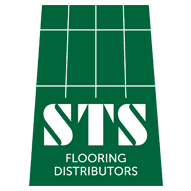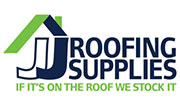Warehouses are the heart of modern supply chains, serving as hubs for the storage and distribution of goods. With the constant pressure to optimise space, many warehouses turn to mezzanine floors as a solution to make the most of their vertical space. While these elevated platforms offer tremendous advantages in terms of storage capacity and operational efficiency, they also introduce safety concerns that must not be ignored. Conducting a mezzanine floor risk assessment is a critical step in ensuring a safe and compliant warehouse environment.
The Importance of Mezzanine Floor Risk Assessments
A mezzanine floor risk assessment is a comprehensive evaluation of potential hazards associated with elevated platforms within a warehouse. The primary goal is to identify these hazards, assess their level of risk, and implement appropriate measures to reduce or eliminate those risks. By conducting a thorough assessment, warehouses can enhance safety, prevent accidents, and ensure compliance with relevant regulations. Read on to learn why conducting a mezzanine floor risk assessment is crucial.
Prevent Accidents and Injuries
Mezzanine floors, due to their elevation, inherently pose risks. An effective mezzanine floor risk assessment identifies necessary mitigating measures for potential accidents such as slips, trips, falls, and objects falling from the mezzanine, which can result in employee injuries and damage to goods.
Regulatory Compliance
Warehouses are subject to various safety regulations depending on their location and the types of goods they handle. Non-compliance with these regulations can lead to fines, legal liabilities, and reputational damage. A thorough mezzanine floor risk assessment ensures compliance with safety standards and regulatory requirements.
Maximising Efficiency
An effective mezzanine floor risk assessment will not only identify potential hazards, but also provide solutions to mitigate them. By addressing safety concerns and implementing necessary measures, warehouses can create a safer working environment, reduce downtime due to accidents, and maximise operational efficiency.
Carrying out a Mezzanine Floor Risk Assessment
The mezzanine floor risk assessment should be carried out by the warehouse owner or manager and be a systematic and collaborative process involving the following steps:
Identify Hazards
Survey the entire mezzanine area to identify potential hazards. These may include uneven surfaces, worn-out anti-slip coatings, missing handrails, or overloaded storage areas.
Assess the Level of Risk
Once hazards are identified, assess the level of risk associated with each. Consider factors such as the likelihood of an accident occurring and the potential consequences.
Implement Mitigation Measures
Develop a plan to mitigate or eliminate identified risks. This plan should include specific actions, responsibilities, and timelines for implementation.
Regular Inspections
Establish a schedule for regular inspections and maintenance of the mezzanine floor and associated safety features. Ensure that inspections are carried out by trained personnel who understand safety requirements.
Employee Training
Train employees who work on or near the mezzanine floor regarding safety protocols. They should understand how to use safety equipment and be aware of the location of emergency exits.
Key Safety Measures for Mezzanine Floors
In addition to conducting the mezzanine floor risk assessment and identifying potential hazards, consider these key mezzanine floor safety measures:
Barriers and Safety Gates
Install mezzanine pallet gates around the edges of mezzanine floors. These barriers act as protective enclosures, preventing items or personnel from accidentally falling off the platform.
Stair Rails and Handrails
Ensure that stairs leading to and from the mezzanine have sturdy handrails on both sides to provide stability and support for personnel using the stairs.
Load Capacity Assessment
Regularly assess the load-bearing capacity of the mezzanine floor to ensure it can safely support the weight of stored items and equipment.
Proper Lighting
Adequate lighting is essential to prevent accidents. Ensure that all areas of the mezzanine floor are well-lit.
Anti-Slip Surfaces
Consider using anti-slip coatings or materials on the mezzanine floor surface, especially in areas prone to spills or moisture.
Fire Safety
Implement fire safety measures, including accessible fire extinguishers, clearly marked exit signage, and well-defined evacuation routes.
Compliance with Regulations
Stay updated on local, national, and industry-specific safety regulations to ensure ongoing compliance.
Prioritising mezzanine floor safety by carrying out a mezzanine floor risk assessment, allows warehouses to provide a work environment that promotes employee well-being, minimises accidents, and maximises operational efficiency. Safety is an ongoing commitment, and regular assessments and maintenance are key to long-term safety and success in warehouse operations.
Contact us to find out more about how to keep your warehouse team safe, or browse our range of mezzanine flooring.























